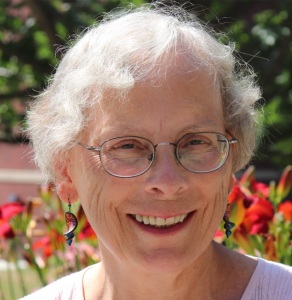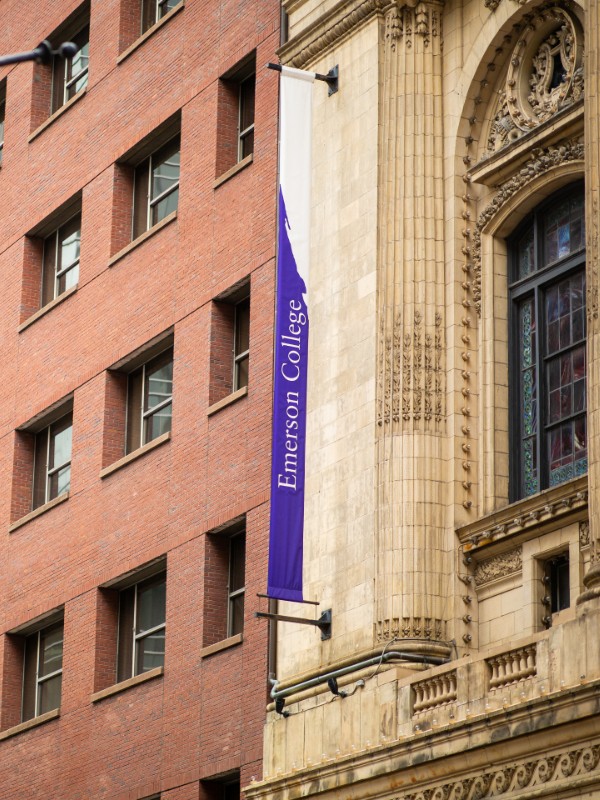Interview With Dr. Shelley Velleman of University of Vermont

Shelley L. Velleman is Professor and Chair of Communication Sciences and Disorders at the University of Vermont. Her teaching, research, and clinical work focus on typical and atypical speech development. She specializes in pediatric motor speech disorders, especially Childhood Apraxia of Speech (CAS). She also studies the speech of children with neurodevelopmental syndromes such as Williams syndrome, 7q11.23 Duplication syndrome, and Autism Spectrum Disorder. She has authored many articles and three books on these topics. Dr. Velleman has been selected as an American Speech-Language-Hearing Association (ASHA) Fellow for 2019.
Note: You should consult with your doctor or speech pathologist for recommendations on treatment. The views and opinions expressed in this article are those of Dr. Velleman and do not necessarily reflect the official policy or position of SpeechPathologyMastersPrograms.com
How did you become interested in researching apraxia?
Some children I was working with initially sparked my interest. A colleague and I went to a workshop presented by Kristine Strand and someone else (I’m sorry to say I don’t remember who). I went up and talked with Kristine afterwards about some aspects of the talk and that began a very thoughtful and productive friendship. She and I exchanged ideas about the literature at that time and eventually we started doing presentations together, which led to writing a book chapter together. The more I learned, the more questions I had, and there were very few answers at that time.
What are some of the most important things that we have learned about childhood apraxia in the last couple of decades?
When I first started out, the #1 symptom that people listed as being diagnostic of CAS was “failure to make progress in therapy”. That symptom is gone from our lists because we’ve found out that, if we use the right approaches, these children do make progress. Sometimes it’s slow and often it’s frustrating – for the child, the family, and the speech-language pathologist (SLP) – but it’s not hopeless. There’s always something we can do to improve a child’s communicative potential, even if that something will not improve their speech per se.
Another key thing that I’ve learned is that we can’t assume that every child will fit into one of our neat little boxes – this one has dysarthria, this one has apraxia, this one has “only” a phonological (cognitive-linguistic) speech sound disorder. Although there certainly are children for whom only one diagnosis is appropriate, there are many more who have CAS plus some symptoms of something else, or speech sound disorder with some symptoms of CAS, or symptoms of CAS and also of both dysarthria and phonological disorder with no one diagnosis dominant enough to give that label. I’m convinced that in the future researchers will learn to discern different subtypes of CAS, with different symptoms, and for which different approaches will be more effective. But even then there will undoubtedly be many children with mixed symptoms.
In addition, every child brings unique strengths, unique support systems – family, SLP, school, etc. – and unique challenges to the table. If we work closely with the family and with as many of the other professionals who are involved as we can, then we can find strategies that build upon the positives to maximize the outcomes. It’s no longer appropriate to think of our job as only improving children’s speech. We are treating a whole child within a whole family and a whole community – which increases the challenges, for sure, but it increases the insights and the resources even more.
What are some of the current challenges to getting children with apraxia the care they need?
Some of the comments I made above relate to one of the biggest challenges: we still don’t have a list of symptoms, a test, or an assessment procedure that we all agree upon for diagnosing CAS. How can we treat the disorder, get it covered by insurance, and do research on it if we don’t even agree on how to recognize it? I’m currently involved in an international research effort, funded by Apraxia-Kids, with co-PIs from the University of Sydney (Elizabeth Murray and Tricia McCabe) and Syracuse University (Jonathan Preston) to determine whether CAS specialists around the world agree upon the diagnoses and the symptoms of a large set of children with moderate to severe speech sound disorders – some of whom probably have CAS, some of whom definitely don’t, and some in between. We’re hoping that this will help us to identify which symptoms are used most consistently and reliably by the apraxia “experts” to differentiate CAS from other speech sound disorders versus those symptoms that are confusing or debated even within this group of people. We hope that this is just the first step in a set of studies that will significantly reduce the diagnostic confusion and inconsistency, not only among the experts but also among practicing SLPs.
At the same time, I’m working on getting norms for a test developed by some colleagues (Vani Rupela and Mary Andrianopoulos) and I, which we hope will help SLPs to identify and differentiate motor speech disorders in young children who are speakers of any language, in a child-friendly way. So far, with the help of some other SLPs across New England, we’ve administered the Language-neutral Assessment of Motor Speech (LAMS) to over 75 children. As we do so, we continue to refine the administration manual to make the test as reliable and user-friendly as possible.
A separate challenge is that one of the most solid research findings regarding intervention for children with apraxia is that intensity of services matters. Not only does it take many hours of therapy to improve their communication, but the services make more difference if they’re offered more intensely – more hours per week. The same number of hours spread out over more weeks is less effective. This level of intensity is very hard to provide and very hard to pay for. Luckily, researchers are exploring various options to address this challenge, including the efficacy of carryover by speech-language pathology assistants, teachers, and caregivers, and also options such as teletherapy and extra practice using apps.
You also research how different languages influence the process of learning to talk. What have you learned?
The most important finding is that prelinguistic communication – interactions between caregivers and infants including the babbling that babies produce – lays the groundwork for meaningful communication. By the time they begin to say words, infants already know a tremendous amount about the language(s) that they have been hearing and mimicking in their babble. This means that it’s important for caregivers to participate enthusiastically in these interactions with their infants. It’s not only okay, it’s great to babble back to babies – repeating the sounds that they make so that they get reinforcement for babbling and they get to connect their vocalizations with ours. Of course, we also need to talk to them, especially about what they’re seeing and doing.
Another important finding is that children who speak African American English (AAE) as a first dialect learn the speech sounds in a different order than children who are learning General American English (GAE) first. It’s not that they’re delayed; they master some difficult sounds earlier and some later, due to the status of those sounds within their own dialect. This means that we have to be careful about using the norms in the literature and in test manuals, which are based largely on either children learning GAE only or on a mixture of many children learning GAE and a few AAE speakers. Mixing the children together just confuses the results; it’s not actually better.
How do you select new research projects?
Partly I have certain questions that I’m highly motivated to find the answers to, such as the underlying nature of childhood apraxia of speech: What are the key features versus the symptoms that are secondary to those primary ones? Are there subtypes? How can we best intervene? But also I’ve learned that strong, passionate collaborators are key. I work much harder and smarter when I’ve got at least one partner that I can discuss the issues with, including the intricacies of the research design as well as how to interpret and apply the findings. I learn a tremendous amount from all of my colleagues and they make me a much stronger researcher. Therefore, my choice of research projects is definitely affected by the availability of collaborators who are interested in the same questions I am.
What aspect of your research are you most proud of?
I’m proud to be doing research that involves interacting with real children and families that are affected by motor speech disorders in such a way that while I’m delving into the key questions about the nature of the disorder(s) I’m also providing concrete advice and support to those children and families. I feel that I’ve contributed not only to the conceptual life of scholars in my field but also to the communicative abilities of more youngsters than I can count, over the span of almost 40 years at this point. I’ve loved seeing them develop and grow into their own selves, able to use their voices – or their hands or their devices – to express their inner identities. For related reasons, I’m proud that I’ve consistently provided workshops and talks for practicing SLPs, showing them how the research applies to what they do in the clinic. I try to achieve that same goal in my classroom teaching as well.
Do you have any advice for speech pathology graduate students?
Whether you decide to go on for a higher degree (e.g., a PhD) or not, don’t ever stop asking questions. Don’t assume that what your textbooks or your mentors tell you, or what the test or therapy manual says, is the last word. We are constantly learning more and part of our drive to do that is the hard questions that our students and our clinical colleagues ask us and that we ask each other. Every client is an opportunity to be confused, which results in thinking more deeply and arriving at new insights. If you think you’ve discovered a new approach or a new way of thinking about something, share it widely. If you’re totally baffled, share that too. If you work somewhere where questions are not welcomed or not respected, find a new job. If you get to the point where you think you know it all, then it’s time to find yourself a new challenge.
Sponsored online speech pathology programs

Online MS: Pursue SLP Certification. Study FT/PT
Speech@Emerson enables you to earn an MS online and pursue SLP certification in as few as 20 mos. Learn the same curriculum as the on-campus program. Study FT or PT.
- Prepares you to pursue certification as an SLP generalist
- In-person clinical placements at faculty-approved partner sites
- As few as 20 months to complete
SPONSORED

Want to Become an SLP? Earn an MS Online at NYU
NYU Steinhardt’s online master of science program in Communicative Sciences and Disorders prepares aspiring speech-language pathologists with a comprehensive professional education.
- Prepares students to pursue SLP licensure
- Accredited by ASHA’s Council on Academic Accreditation
- As few as six terms to complete
- Full-time and part-time plans of study
SPONSORED

